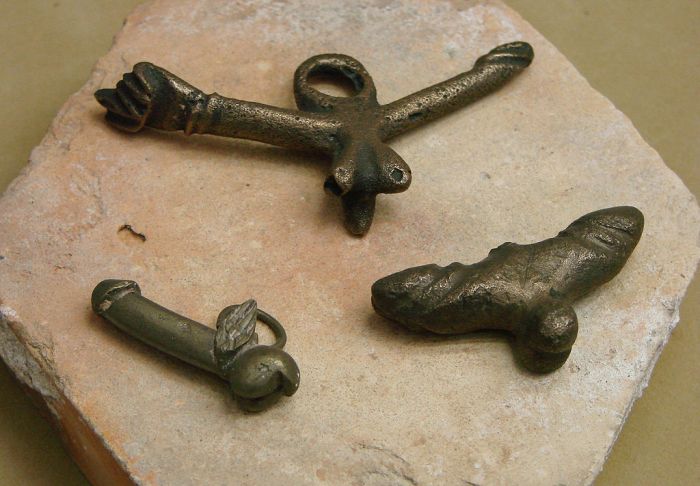Phallus was widely used in the Greek and Roman world. The ubiquity of the phallus also meant its partial detachment from sexuality. The children wore it on the neck, it was on reliefs, it decorated the lamps, jewelry and dishes, or served as an amulet, a religious symbol.
While for us the erect phallus always evokes associations with sex, in ancient Rome the range of its meanings was much broader. Phallus was a very important and lucky symbol. Some of them were embellished with a lion’s paw, wings or bird’s head.
Phallus was seen in ancient times as an extremely important symbol. Greeks, Romans and other peoples decorated, among others city walls, houses and baths with penises. Among the Romans, Egyptians, Semitic Arabs and Hebrews, the custom of swearing on their own crotch was even adopted. Most often, person who made the oath held his own crotch.
Sculptures of a phallus were discovered on the thresholds of houses in Pompeii. Phallus, probably as an image of the god Liber Pater (term fascinum) was to protect the house from evil powers and ensure fertility to the family. The worship of this symbol is still mentioned by Augustine from the turn of the 4th and 5th centuries CE, when the Roman Empire was largely Christian. The priest reluctantly described the annual village phallic rites taking place in Italy. According to his account, the image of a member was placed in a cart and transported around the villages, and then triumphantly entered the city with him. There he was then decorated with flowers. Throughout the journey, vulgar vocabulary was used, and the celebrators showed sexual freedom. It was also customary to bury wooden phalluses in the ground, which was also done by Christians themselves. Sometimes, in order to live in harmony with the commandments of Christ’s faith, phalluses with the signs of the cross were buried.








